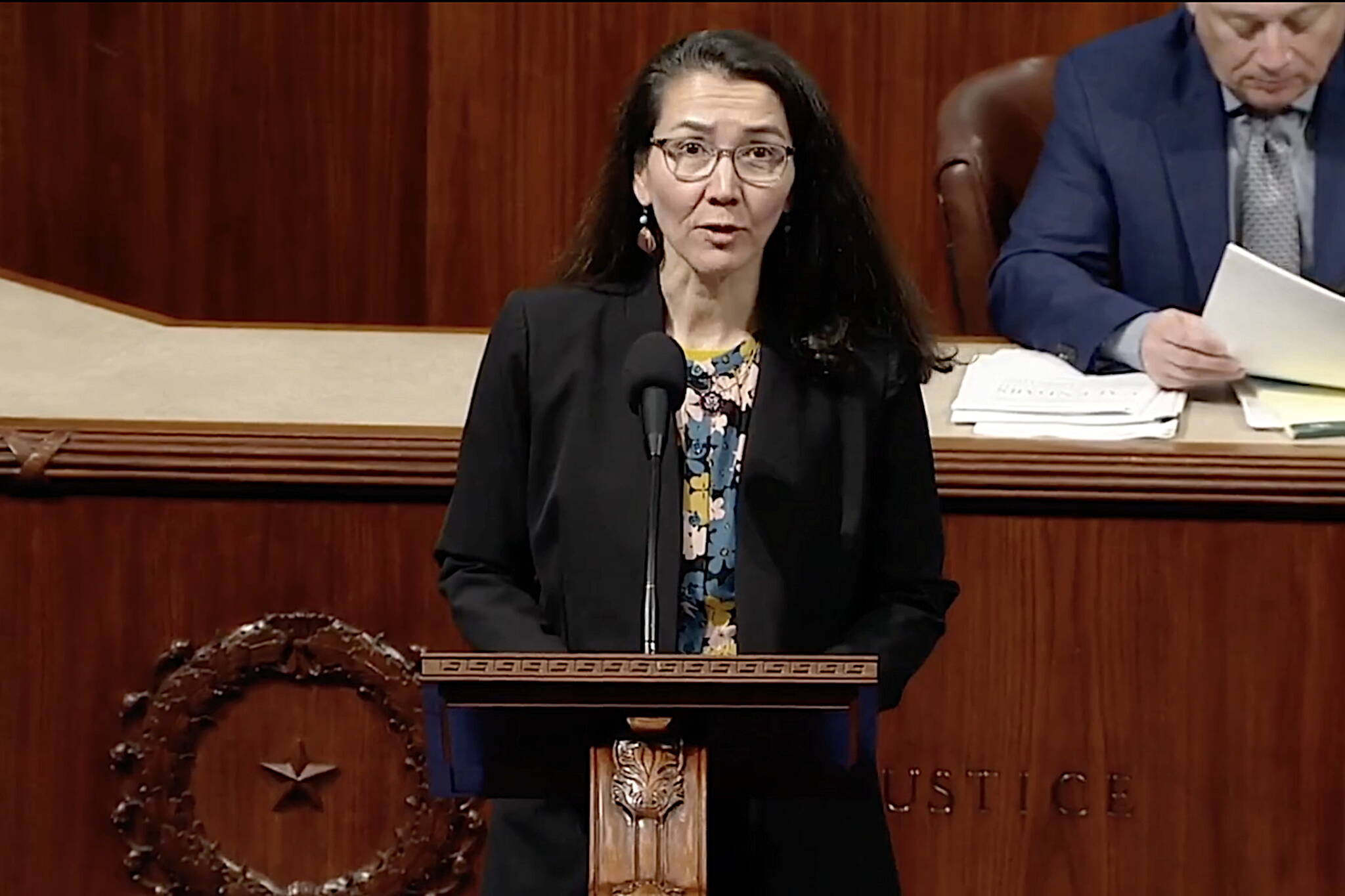Republican U.S. House candidate Nick Begich is ahead of Democratic incumbent Rep. Mary Peltola, according to early results released early Wednesday morning by the Alaska Division of Elections.
With 296 of 403 precincts reporting results at 11:32 p.m., Begich led Peltola by 5 percentage points. Begich had 50.02% of the votes so far, and Peltola had 45.1%.
Few results have come in from Democratic-leaning rural Alaska, which favors Peltola. Total turnout is expected to be near 355,000 votes; thus far, 245,425 have been counted.
Alaskan Independence Party candidate John Wayne Howe and imprisoned, out-of-state Democrat Eric Hafner trailed the frontrunners by wide margins.
Howe had just 3.8% of the vote, and Hafner less than 1%.
Voters who backed those two candidates could still decide the election. If neither Peltola nor Begich have at least 50% of the state’s first-choice votes by the time counting is finished, ranked choice voting will be used to decide the ultimate winner.
On Nov. 20, the Alaska Division of Elections will redistribute votes for Howe and Hafner to Peltola and Begich, based on voters’ second and third choices.
Additional absentee ballots will be added to candidates’ totals on Nov. 12, Nov. 15 and Nov. 20, according to the Division of Elections.
Alaska’s election will have significant consequences for the rest of the country. Control of the U.S. House remains uncertain after Election Day, and a victory by Begich would increase the odds of a Republican governmental trifecta.
Speaking to supporters Tuesday night, Begich said the election results brought huge victories for Republicans, who won the presidency and a solid majority in the U.S. Senate.
“Alaska’s House seat has never mattered more than it matters today because we’ve got to move the America First agenda through Congress and to President Trump’s desk so we can make America great again,” Begich said.
Alaska’s congressional district is one of only eight in the country where voters supported Donald Trump for president in 2020 and elected a Democrat to the House in 2022.
That made it one of a few tossups among the 435-seat House, which was closely divided between Republicans and Democrats before Election Day.
As a result, pro-Democratic and pro-Republican campaigners spent more than $40 million on the race, making it one of the most expensive in the nation.
In Alaska’s “final four” August primary election, Peltola earned just under 51% of the overall vote, and Begich finished in second with 26.6% of the vote among 11 candidates.
After the primary, Lt. Gov. Nancy Dahlstrom — a Republican candidate who finished third — withdrew from the race, as did Matthew Salisbury, a Republican who finished fourth.
That put Howe and Hafner into the general election.
The Alaska Democratic Party sued, arguing that Hafner was ineligible to run, but an Anchorage Superior Court judge — upheld on appeal by the Alaska Supreme Court — ruled that Hafner can run for office, even if he may not legally be able to serve.
Peltola declined interviews Tuesday night, but in a written memo provided before the first results, her campaign said that it believes Peltola will gain ground in the results as rural votes and absentee ballots are counted.
It pointed to the August primary, which saw Peltola’s performance rise by almost a percentage point between election day and the end of ballot counting. James Brooks is a longtime Alaska reporter, having previously worked at the Anchorage Daily News, Juneau Empire, Kodiak Mirror and Fairbanks Daily News-Miner. This article originally appeared online at alaskabeacon.com. Alaska Beacon, an affiliate of States Newsroom, is an independent, nonpartisan news organization focused on connecting Alaskans to their state government.

